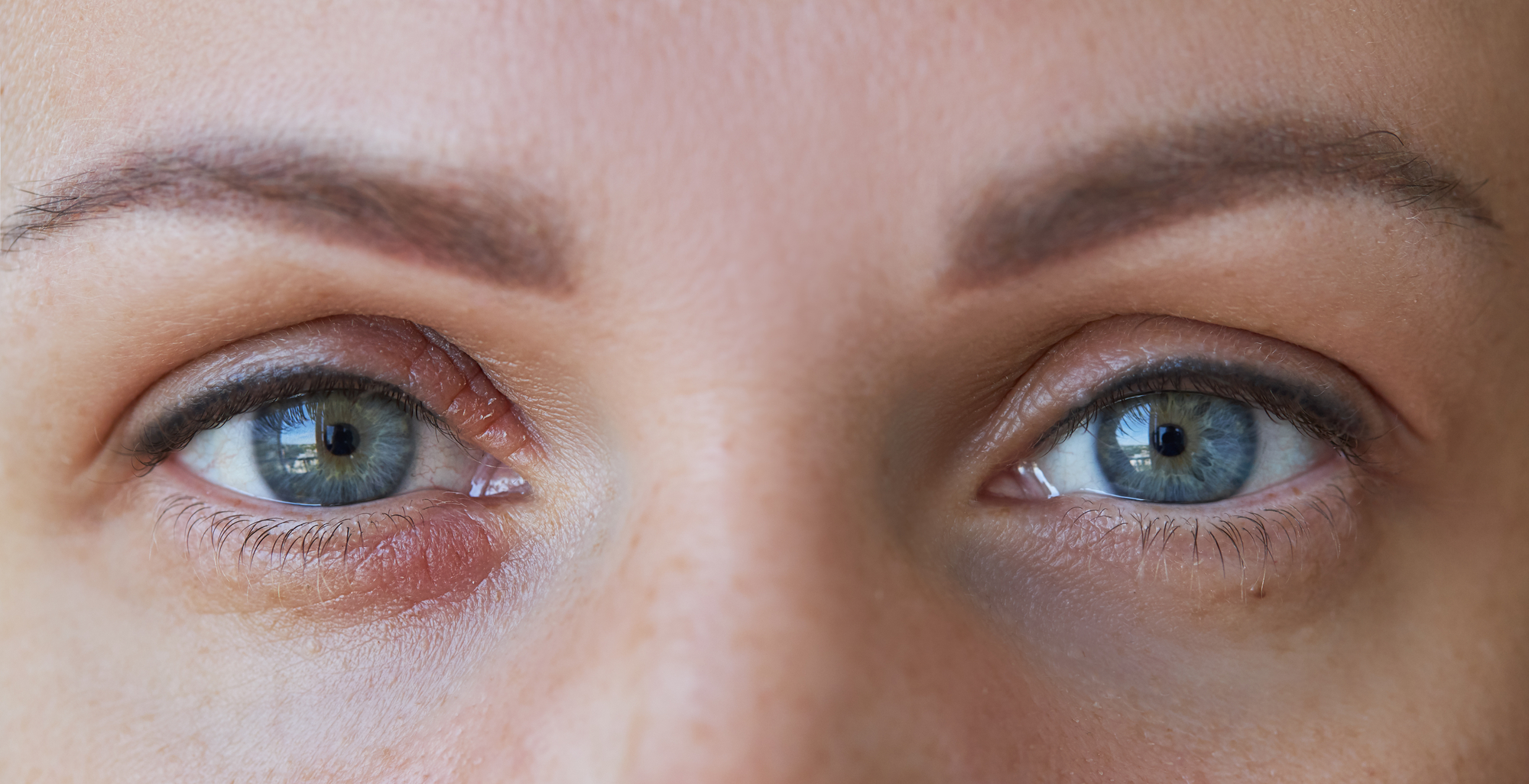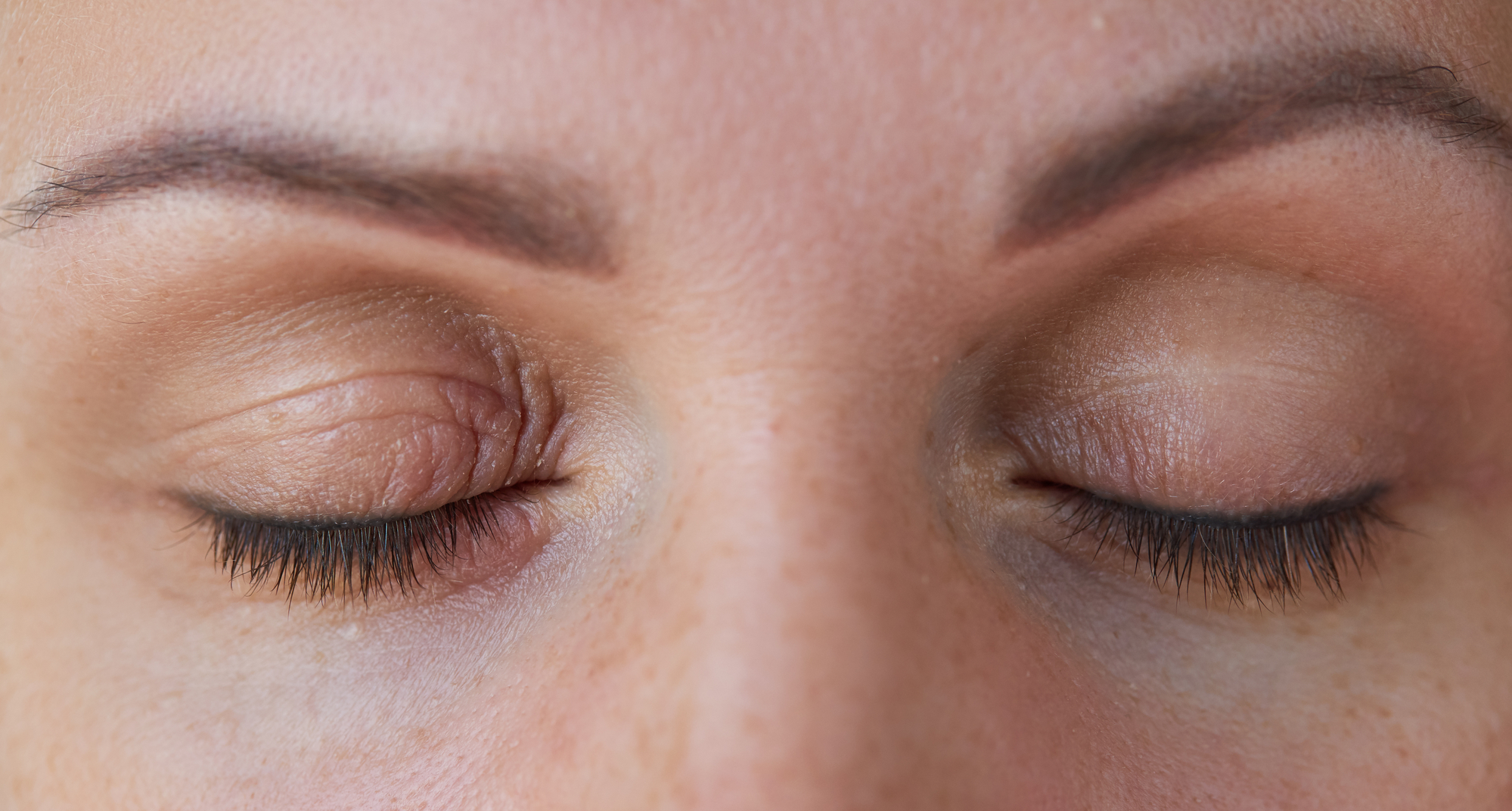Updated on November 14, 2024
What Is Eyelid Dermatitis?


Vision Center is funded by our readers. We may earn commissions if you purchase something via one of our links.
It’s estimated that 20% of the general population is affected by contact dermatitis, including eye dermatitis (eye eczema). This means it’s a common skin condition for children and adults.
Finding the cause and environmental triggers of eyelid dermatitis is the first step in treating periorbital dermatitis. It can be challenging and requires an elimination approach.
What are the Types of Eyelid Dermatitis?
There are various types of eyelid dermatitis depending on what’s causing the immune response and skin inflammation. The most common types of eye eczema include:
- Irritant contact dermatitis. Occurs when an irritating substance causes damage to the outer layer of the skin. It does not involve the immune system.
- Allergic contact dermatitis. An allergic reaction to a substance that triggers a hypersensitive immune response resulting in inflammation and an itchy rash.
- Seborrheic dermatitis. Often associated with the scalp but can affect the eyelids. It reacts to a type of yeast naturally found on the skin.
- Atopic eczema. A chronic skin condition that can cause frequent flare-ups, resulting in sleepless nights, low self-esteem, and depression. There’s no cure for atopic eczema.


What Causes Each Type of Eyelid Dermatitis?
Each type of eye dermatitis is caused by different factors, such as:
- Irritant contact dermatitis. Triggered by laundry detergents, soaps, household cleaners, body fluids, paint, certain plants, latex, and hair dye to name a few.
- Allergic contact dermatitis. Triggered by fragrances, nickel, poison ivy and poison oak, antibiotics, latex, hair dye, citrus fruits, makeup, and lotions.
- Atopic eczema. Caused by genetics, food allergies, asthma, stress, harsh soaps, detergents, cleaners, tobacco smoke, and low humidity.
- Seborrheic dermatitis. Triggered by hormones and various health conditions like HIV, neurological disorders, epilepsy, hepatitis C, and Down syndrome.
Risk Factors for Eyelid Dermatitis
Eyelid dermatitis frequently runs in families and can happen at any age. However, certain factors can increase your risk of developing eyelid dermatitis.
For example, infants and children are more susceptible to atopic and seborrheic dermatitis. Meanwhile, health conditions like asthma, food allergies, and hay fever can contribute to eyelid dermatitis.
Poor hygiene and handling harmful chemicals can also lead to eyelid dermatitis. In some cases, medications like NSAIDs, antibiotics, and antifungal medicine can increase your risk of getting it. Lastly, you’re more likely to have eyelid dermatitis if you have a family history of eczema.
How to Prevent Eyelid Dermatitis
While it may be challenging to get rid of eyelid eczema completely, there are ways to prevent and minimize symptoms. Here are some of our tips:
- Avoid touching your eyes and face.
- Limit makeup use and moisturize frequently to manage symptoms.
- Use over-the-counter medications and anti-itch cream.
- When doing your skincare routine, use products for sensitive skin.
- Avoid the heat, activities that make you sweat, and try to reduce stress.
- Apply a warm compress to ease symptoms.
Symptoms of Eyelid Dermatitis
Since the eyelids are thin and delicate, they are susceptible to allergens and irritants. Eyelid dermatitis affects the upper and lower eyelids of either one or both eyes.
Common symptoms of eyelid dermatitis include:
- Redness
- Red itchy rash
- Scaly skin
- Pain
- Burning or stinging sensation
- Swelling and inflammation
- Thickened skin
- Dry, cracked skin
- Irritated skin
- Hives
- Oozing blisters
- Greasy-looking skin
- White flakes
- Darkening of the skin
What Are the Complications of Eyelid Dermatitis?
If left untreated, eyelid eczema can affect the quality of life and lead to poor health outcomes, including:
- Severe eye infection that can lead to blindness
- Skin infections
- Blisters and scarring of the eyelids
- Depression and anxiety
- Low self-confidence
- Difficulty sleeping
When to See a Doctor
Eyelid dermatitis typically resolves itself when the environmental trigger is removed. However, atopic and seborrheic dermatitis is chronic, with flare-ups that come and go.
It is essential to seek medical care from a dermatologist or primary care doctor if eyelid dermatitis symptoms are affecting the quality of life, including:
- Blurred vision
- Yellow or green discharge (signs of infection)
- Crustiness around the eyes when you first wake up (signs of pink eye)
- Symptoms don’t resolve with over-the-counter treatment
- Eye pain
- Light sensitivity
- Any changes in vision
How is Eyelid Dermatitis Treated?
The first goal of treating contact eyelid dermatitis is to eliminate the allergen or irritant-causing symptoms. They also aim to decrease inflammation, ease pain and itching, keep the skin hydrated, and prevent infection.
Gentle skin care, medication, and trigger management are the gold standard in treating eyelid dermatitis. Common treatments for people with contact and atopic eyelid dermatitis include:
- Topical medication. Corticosteroid cream, coal tar, crisaborole, or pimecrolimus ointment.
- A proper skincare routine. This includes bathing, moisturizer, using products designed for sensitive skin, and a cold compress on the eyes
- Managing triggers. Have a doctor help identify and eliminate triggers. This also helps avoid environmental allergens and irritants.
- Phototherapy. Uses ultraviolet light to minimize dermatitis symptoms.
- Oral medication. Medication prescribed by a doctor can reduce immune response and relieve symptoms
How is Eyelid Dermatitis Diagnosed?
Eyelid dermatitis is diagnosed by a primary care physician, dermatologist, allergist, or eye specialist. They’ll take a detailed medical and family history during the appointment and ask you about symptoms.
It is good to write down or keep track of flare-ups and possible triggers to discuss with the doctor. Various skin tests are used to diagnose eyelid dermatitis and determine what type of eczema is causing symptoms.
Standard skin tests include:
- Skin patch test. This involves placing patches containing common allergens on the arms or back to look for signs of inflammation.
- Skin prick test. A tiny needle containing common allergens lightly scratches the back to look for signs of inflammation.
- Intradermal test. A small amount of allergen is injected into the skin to see if it causes allergic reactions.
- Radioallergosorbent (RAST) test. This uses a blood sample to check for antibodies that confirm you are having an allergic reaction to a substance.
Eyelid dermatitis can be a frustrating and persistent condition, but with proper diagnosis and treatment, it can be manageable. Patience and consistency are key in managing eyelid dermatitis.
In this article
11 sources cited
Updated on November 14, 2024
Updated on November 14, 2024
About Our Contributors
Amy, a registered nurse with an M.S. in Nursing from California State University, Sacramento, and a B.A. in Journalism from California State University, Chico, is a freelance health writer for Vision Center. Her unique combination of nursing knowledge and journalism skills enables her to educate readers about eye health effectively. Amy's goal is to merge her nursing experience with her writing talent to raise awareness about common eye conditions and ways to prevent vision loss.
Dr. Melody Huang is an optometrist and freelance health writer with a passion for educating people about eye health. With her unique blend of clinical expertise and writing skills, Dr. Huang seeks to guide individuals towards healthier and happier lives. Her interests extend to Eastern medicine and integrative healthcare approaches. Outside of work, she enjoys exploring new skincare products, experimenting with food recipes, and spending time with her adopted cats.

